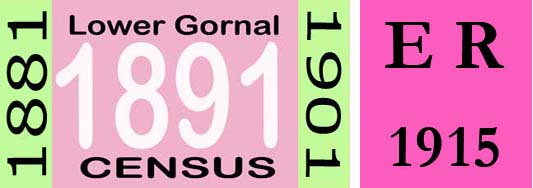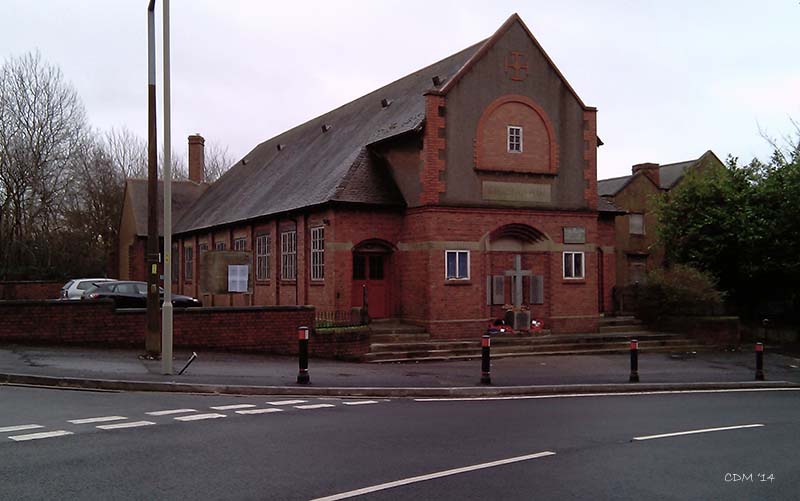
|

|
|||
|
Landmarks ~
Churches ~
Pubs ~
Shops ~
Amenities ~
Dwellings ~
Events ~
Schools ~
Sports
Industrial ~ Transport ~ Folklore ~ Families
~ Gallery - Amenities ~
Gornal is not exactly an attraction for outsiders, but perhaps there is at least a couple of
reasons to know where Gornal is?
~
The Driving Test Centre, Lower Gornal.

Many good and bad memories will be held of the place following their visit to The Driving Test Centre
in Lake Street, Lower Gornal.

Since the 1960's this rather unobtrusive building has been the dread of learner drivers from all over this part of The Black Country.
The Centre was closed on Wednesday, 15th of May, 2019, and has been relocated to Newton House, The Pensnett Estate, Kingswinford.
The building is currently being altered.
~

Coopers Band Road entrance, 2007
Gornal Wood Crematorium.
For the same reasons, Gornal Crematorium, on the outskirts of Gornal Wood will not provoke many
good memories.
The Crematorium was commissioned and administered by Dudley Council, it was officially opened on 1st. October 1960,
with landscaped memorial gardens and entrances in Cooper's Bank Road and Chase Road.
The adjacent cemetery had already been in operation, burials had commenced in 1955.
Gornal 'Crem' is one of the most well-kept and attractive of its kind.
~
Infectious Diseases Hospital
Before the intense mining had begun in the Cotwall End Valley known as the Dingle,
Sedgley Urban District Council built an Infectious Diseases Hospital near to Conqueror's Farm.
Very little is known about it.
The Hospital building was located North of Conqueror's Farm, and just off Cotwall
End Road, the Hospital is shown on an Ordnance Survey map c1905 but is not present
on earlier or later maps, the Hospital was apparently only used in the short-term.
Sedgley Board, had decided not to join with Dudley, and procure their own infectious diseases hospital
according to a newspaper report of February 1877, the Board deciding on a joint
venture with the Coseley district to provide their own.
The Infectious Diseases Hospital at this time was attached to the Workhouse
(The Workhouse later became Sedgley Police Station), however it was severely damaged
by a storm in 1877 and apparently no further use was made of it.
A newspaper of 1872 reported that a 'hospital' at Gornal Wood treated Small Pox patients,
and reported inmates 'escaping' into the community!
It is not known if that report refers to the Hospital near Conqueror's Farm or even that of Sedgley, but it seems likely that it could have been located elsewhere at that time.
A news snippet in the Dudley and District News on Saturday 2nd September, 1882, reports;
"If there were any [small pox] cases at Sedgley there was an Engine House which might be utilised
for the accommodation of patients."
Was this part of the choice of Cotwall End Valley, where there may have been a pit 'engine house'?
1894, Birmingham Daily Post, 29 June.
Subsequent reports up until 1893 indicate that there was still no hospital at Sedgley.
It is probable that the Infectious Diseases Hospital near Conqueror's Farm was built shortly
after 1893 as the report opposite implies.
Small Pox, Typhoid and other diseases were rife in the district in the 1870s
causing many deaths especially in infants due to poor sanitation.
See the page on the Typhoid epidemic. ~
The Royal British Legion Social Club

The British Legion Social Club in 2019
Ruiton Street, Lower Gornal
The British Legion was founded in 1921 to support ex-service personnel principally after the Great War,
it was granted a Royal Charter in 1925, and is most associated with Poppy Day.
The Lower Gornal branch of the British Legion was formed in early 1933, and in June 1933 the
standard was dedicated at St. James' Church.
The parade was headed by the Gornal Excelsior Brass Band and attended by hundreds
of people.
At this time the Woodman Inn, Gornal Wood was the headquarters. Officials were Captain W.E. Gibbons (President), Mr B.A. Hemmings, Mr A.W. Moss and Mr W.H. Harlow (Standard Bearer)
The Gornal 'Legion is one of a great number of social clubs spread throughout the UK and beyond.
The original club building, set back further from the road, was a wooden hut
probably constructed in the early 1950s, however the present
club buildings were erected in 1966, featuring a large function room.
~

Medical Centre, Bull Street, early 1970s.
The Medical Centre, Bull Street.
In 1971, the new purpose-built medical clinic in Bull Street, Gornal Wood, was completed at a
cost of £24,000.
The Medical centre was previously located in Bank Street.
Local residents refer to it as 'The Doctors'.
Upper Gornal Village Hall
Opposite to the Arcade shopping centre, still in regular use.
Picture coming soon.
1935. Birmingham Gazette, 29 July.
~
|
|





 Schools
Schools Cinema
Cinema  Meeting Places
Meeting Places


